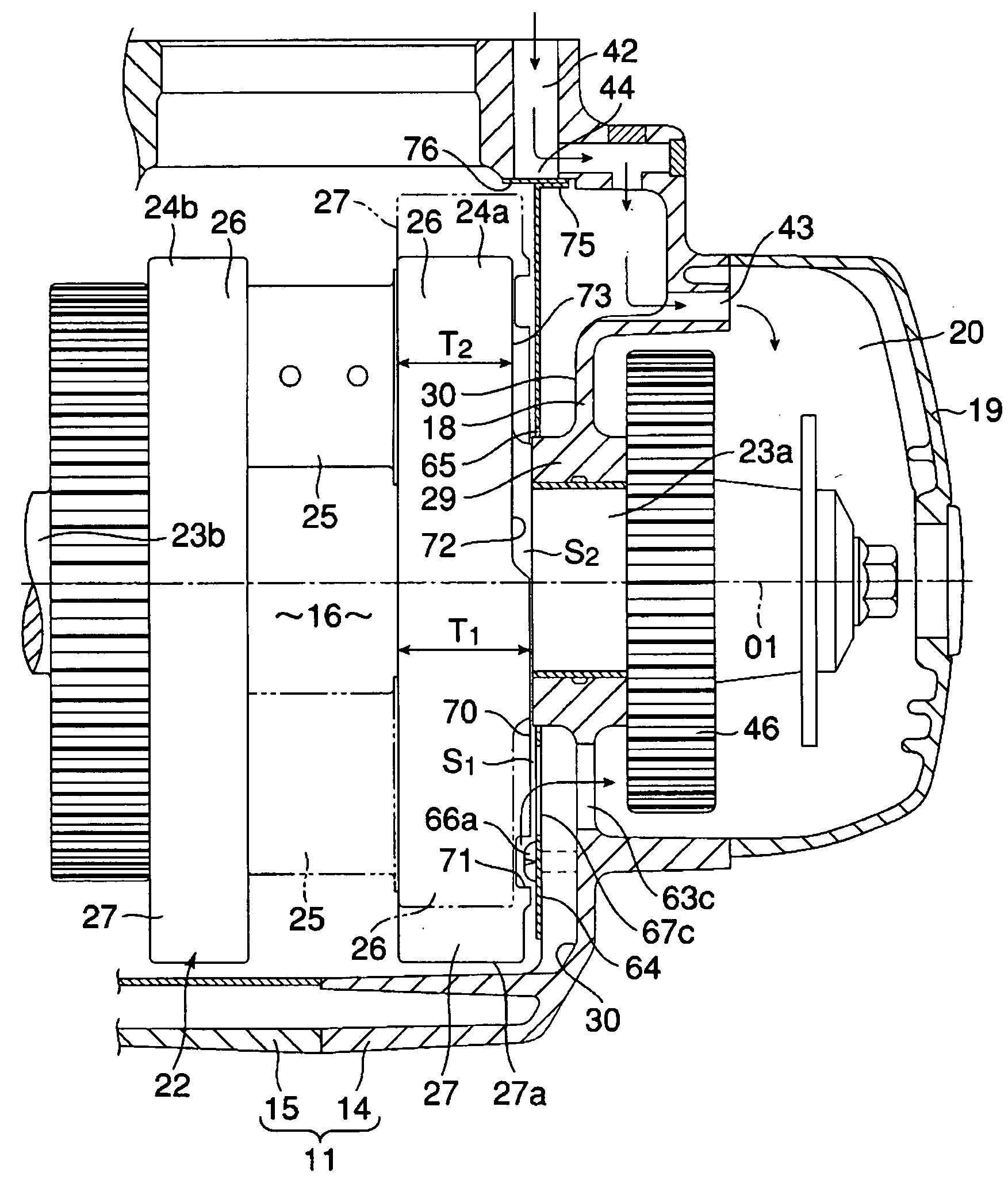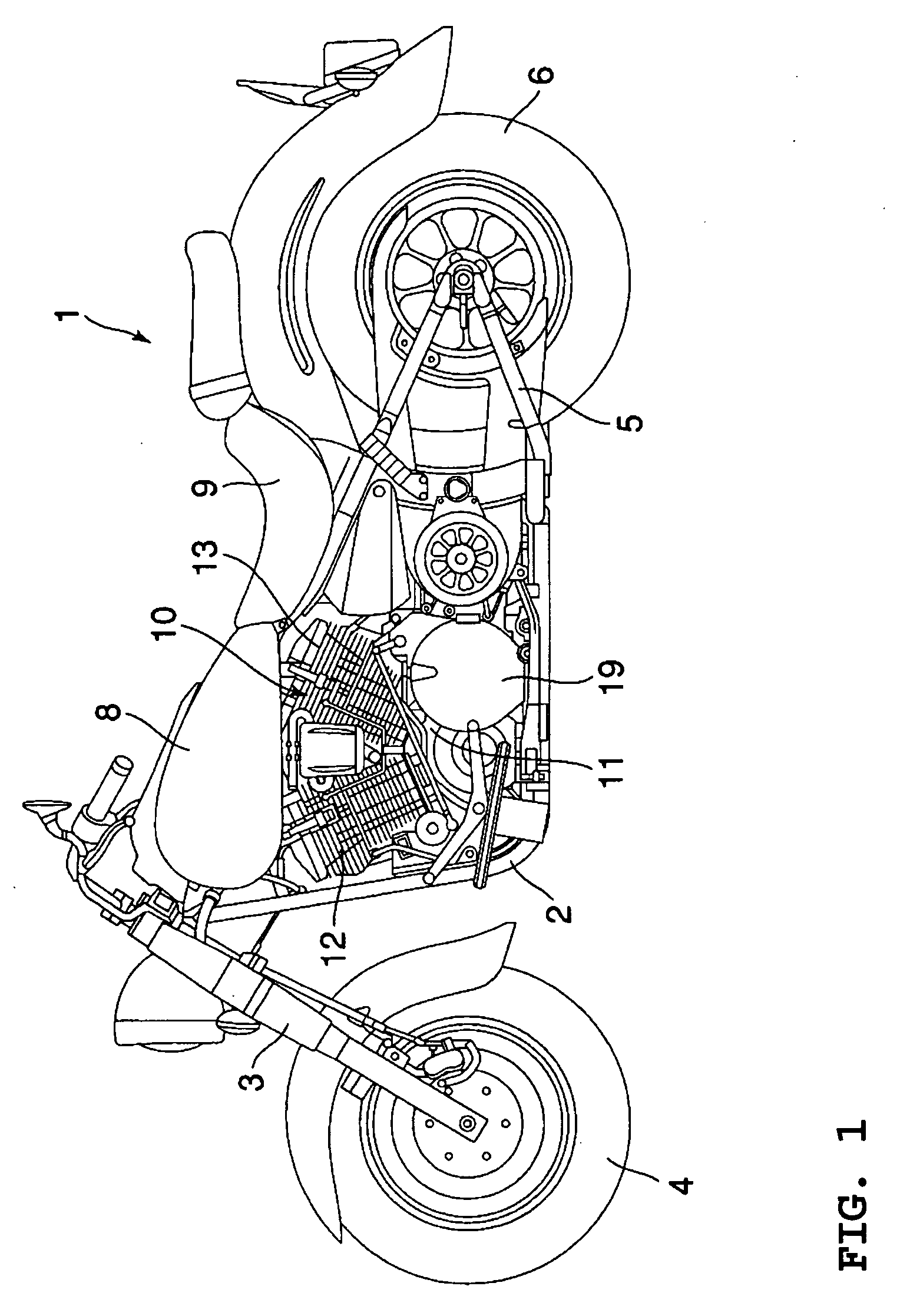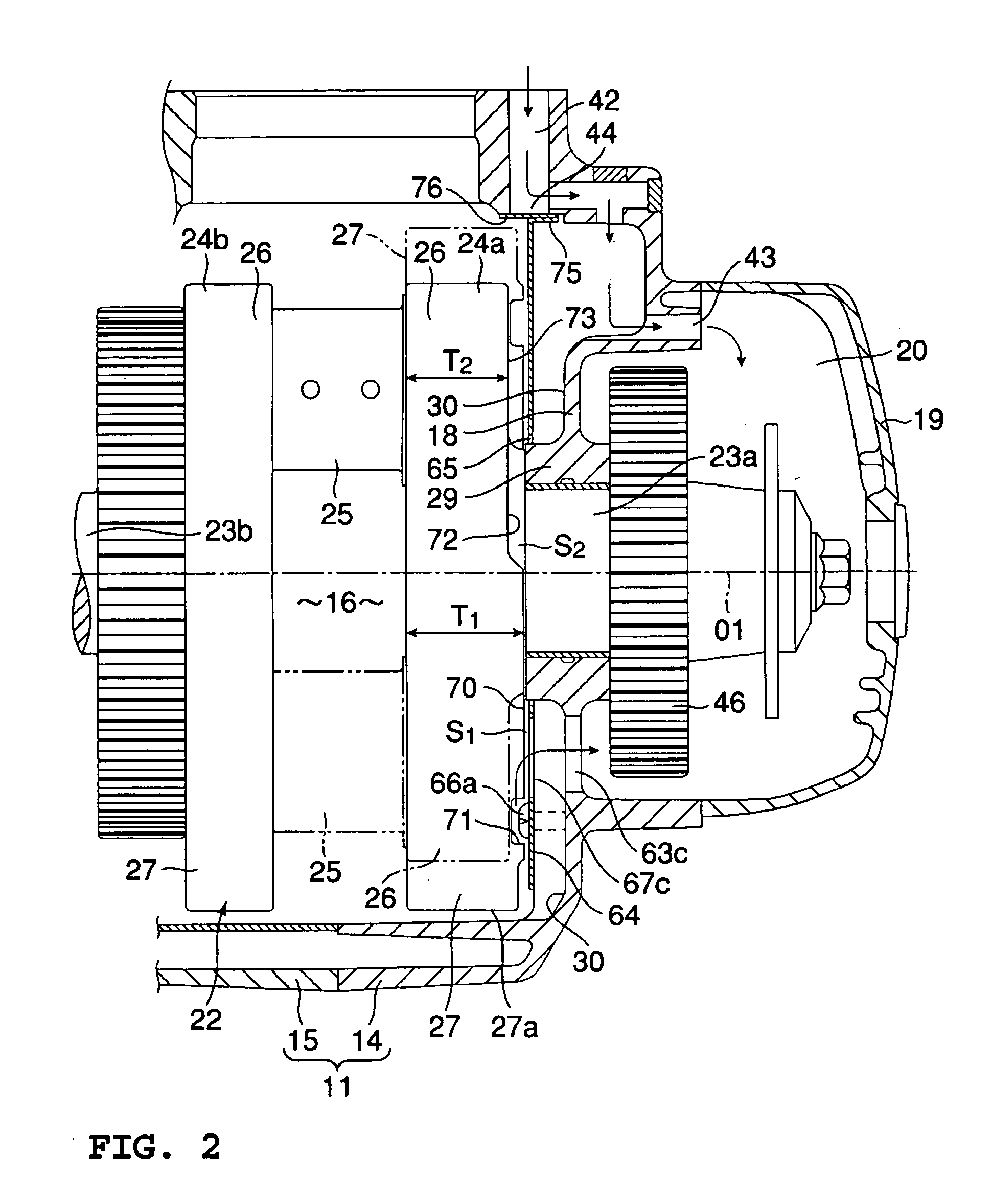Dry-sump, four-stroke engine lubrication device
a lubrication device and dry-sump technology, which is applied in the direction of pressure lubrication, closed-circuit pressure lubricating system, lubrication elements, etc., can solve the problems of blown lubricant oil near the crank web, inability to prevent the flow of lubricant oil into the clutch chamber, and inability to prevent the lubricant oil from being blown away from the periphery of the crank web, etc., to achieve large pressure differential larg
- Summary
- Abstract
- Description
- Claims
- Application Information
AI Technical Summary
Benefits of technology
Problems solved by technology
Method used
Image
Examples
Embodiment Construction
[0034] The first embodiment of the present invention is described next referring to FIG. 1 through FIG. 11.
[0035]FIG. 1 is a drawing showing a motorcycle 1 relating to an embodiment of the present invention. The motorcycle 1 includes a cradle frame 2. A front fork 3 is attached to the front end of the frame 2. The front fork 3 supports the front wheel 4. A rear swing arm 5 is attached to the roar end of this frame 2. This rear spring arm 5 supports the rear wheel 6.
[0036] The frame 2 supports a fuel tank 8, a seat 9 and a dry-sump air-cooled four-stroke V-type two-cylinder engine 10. This engine 10 is installed, between the front wheel 4 and rear wheel 6 as well as below the fuel tank 8.
[0037] The engine 10 includes a crankcase 11, a front cylinder 12 and a rear cylinder 13. The crankcase 11, as shown in FIG. 2, is separated into a left case 14 and a right case 15. A crank chamber 16 and a transmission chamber 17 are formed between the left case 14 and the right case 15. The cran...
PUM
 Login to View More
Login to View More Abstract
Description
Claims
Application Information
 Login to View More
Login to View More - R&D
- Intellectual Property
- Life Sciences
- Materials
- Tech Scout
- Unparalleled Data Quality
- Higher Quality Content
- 60% Fewer Hallucinations
Browse by: Latest US Patents, China's latest patents, Technical Efficacy Thesaurus, Application Domain, Technology Topic, Popular Technical Reports.
© 2025 PatSnap. All rights reserved.Legal|Privacy policy|Modern Slavery Act Transparency Statement|Sitemap|About US| Contact US: help@patsnap.com



